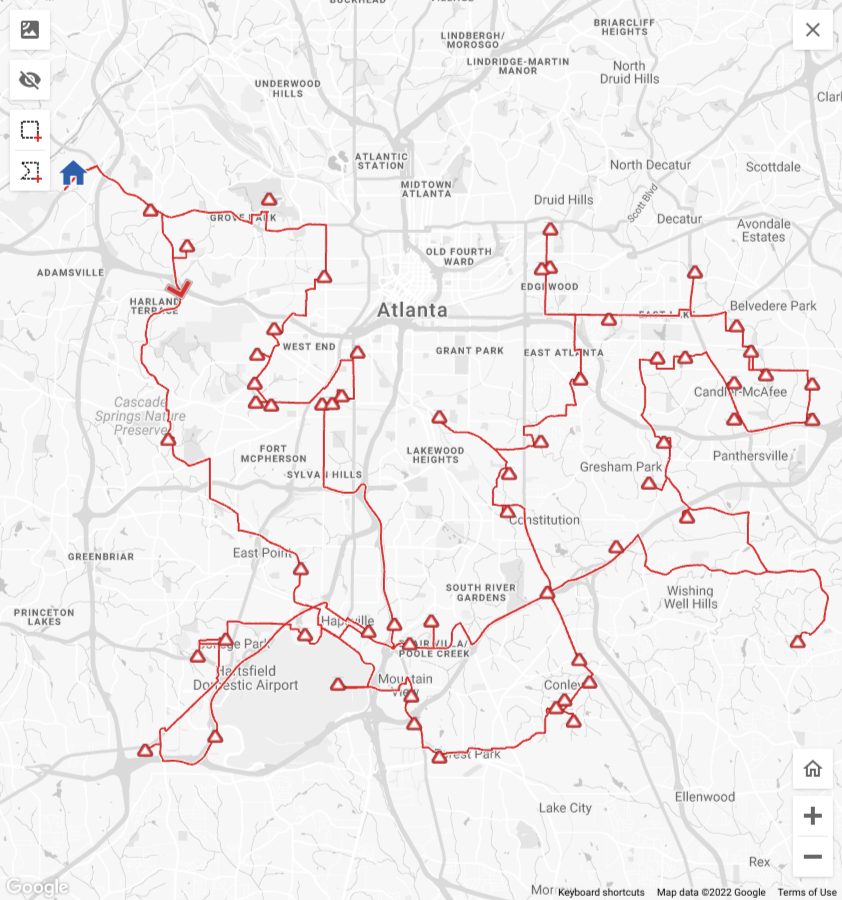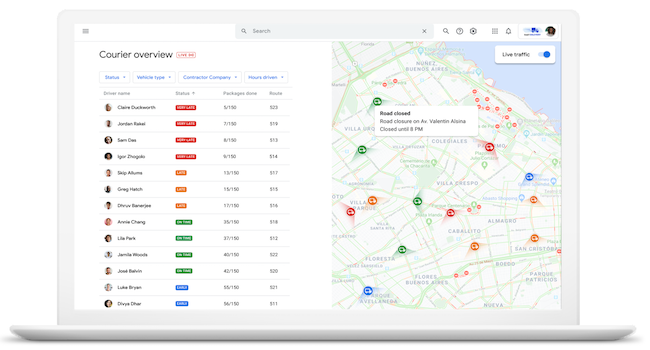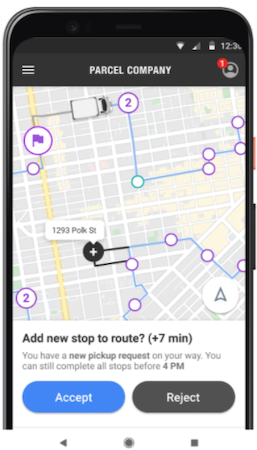 The Route Optimization
capability in Last Mile Fleet Solution is a toolkit that incorporates
Routes API, Routes Preferred API, Directions API, and
Distance Matrix API. It offers enterprise-level features that solve the problem
of finding the optimal order for drivers to complete their tasks.
The Route Optimization
capability in Last Mile Fleet Solution is a toolkit that incorporates
Routes API, Routes Preferred API, Directions API, and
Distance Matrix API. It offers enterprise-level features that solve the problem
of finding the optimal order for drivers to complete their tasks.
What can you do with route optimization?
You can optimize routing across your fleet or fine-tune the task order for particular drivers. You can build an interface to allow your drivers and fleet manager to visually edit routes.
Note: As a separate product, Cloud Fleet Routing API provides direct support for complex, fleet-wide optimization tasks and can be combined with Last Mile Fleet Solution. For information on the Cloud Fleet Routing API, contact your Google Cloud sales representative.
Why use route optimization?
When you manage a delivery fleet, it's crucial that you optimize driver routes to meet consumer expectations. Route optimization ensures that your drivers drive the most efficient route possible—making stops and executing tasks in the optimal order. Your customers orders arrive as quickly and as inexpensively as possible. Route optimization simplifies the effort needed to meet these goals.
- Improve driver task productivity — Ensure that your drivers get optimal routes, including real-time traffic updates, avoiding delays due to congestion.
- Improve consumer experience — Provide your consumers with more precise expected delivery times.
How to use Route Optimization
This section describes a typical process for using Route Optimization.
1. Assign tasks across your entire fleet
 Most fleets begin each day by assigning all required tasks for the day across
their driver fleet. You can use different approaches for assignment, including
driver territories or a route optimization solver. Last Mile Fleet Solution does not
directly address the task assignment problem. Instead, it can take the route
plan from any current solution you use.
Most fleets begin each day by assigning all required tasks for the day across
their driver fleet. You can use different approaches for assignment, including
driver territories or a route optimization solver. Last Mile Fleet Solution does not
directly address the task assignment problem. Instead, it can take the route
plan from any current solution you use.
If you've developed your own route solver, you can use the
Routes Preferred API or the Routes API ComputeRouteMatrix method
to estimate the distance and duration of a route for multiple origins and
destinations. The Routes Preferred API and Routes API
ComputeRouteMatrix method lets you use the same traffic and routing algorithms
used by other Last Mile Fleet Solution products. It has several advantages over the
Distance Matrix API. See Routes Preferred
ComputeRouteMatrix
or Routes API: Compute Route Matrix
for more details.

2. Fine-tune the task order for particular drivers
Once you've assigned tasks to drivers, you can optimize the sequence in which they perform them. You might do this for a number of reasons, such as for territory assignments where you want to optimize the task order for each territory. Or, you might update routes to add pickups or adapt to traffic congestion. For this fine tuning, use the Directions API, which lets you optimize up to 25 stops. For more information, see the Directions API.
If you want to optimize more than 25 stops per route, see the Routes
Preferred ComputeRoutes method. For more information, see the
Routes Preferred ComputeRoutes
and contact your Google sales representative to discuss availability.
3. Allow drivers or the fleet manager to directly edit routes individually
Some fleet operators want their drivers or their fleet manager to visualize and edit routes directly within a user interface. Use the Maps SDK to display the route from the Directions API, and then see how the route is affected based on changes to the stop sequence. Last Mile Fleet Solution Fleet Engine supports this use-case by enabling you to change the driver route at any time. For more information on customizing routes in your map, see Maps SDK for Javascript, Maps SDK for Android, and Maps SDK for iOS.
For more information for routes based on driver input, see the Fleet Engine documentation.
